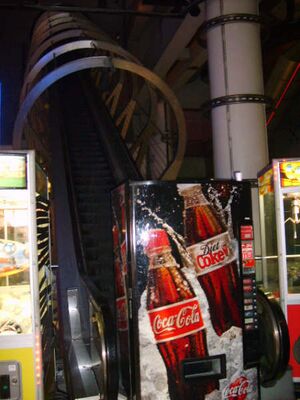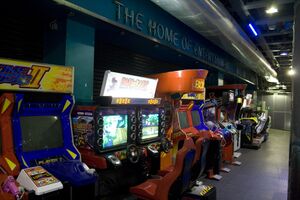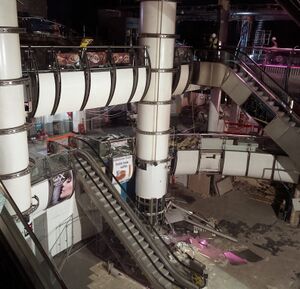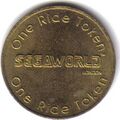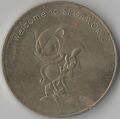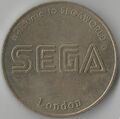SegaWorld London
From Sega Retro
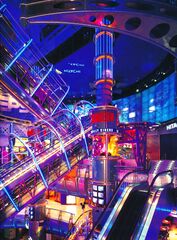
|
| SegaWorld London |
|---|
| Location: The Trocadero, London, United Kingdom |
| Google maps: 51.510490,-0.133022 |
| Opened: 1996-09-07 [1] |
| Closed: 1999 |
This teeny-tiny article needs some work. You can help us by expanding it.
SegaWorld London was a SegaWorld indoor theme park which opened on September 7, 1996. It was housed within the London Trocadero complex within the city of London, UK.
Contents
History
Development
The Piccadilly Trocadero was originally built in 1896 as a restaurant, before closing in 1965. It re-opened as an entertainment and shopping complex in 1984, but by the early 1990s was struggling to find tenants. In 1994 it was purchased by Burford Group plc, led by Nick Leslau and Nigel Wray, who endeavoured to revamp the site for modern consumers.
At the same time, Sega, fresh from arcade and console video game successes, were making moves in opening Sega-branded arcade centres across Europe. In the case of the United Kingdom, this began with Metropolis in late 1992 and continued with the likes of Sega World Bournemouth and a handful of smaller venues using the "Sega World" name. Sega was itself one of the biggest brands in the UK at the time, riding on the successes of the Sega Master System and Sega Mega Drive (and particularly Sonic the Hedgehog), and was attempting to open a new arcade centre in the region every couple of months.
Sega had already had enormous success in Japan following a similar concept. In particular, the 1994 launch of Joypolis Tokyo has proving to be very lucrative - effectively an indoor theme park, Joypolis took things one step further by housing indoor rides and large scale attractions, and still remains active to this day. The plan was to emulate this idea in other parts of the world, so Sega Europe arranged with Burford Group to build SegaWorld London - a UK version of Joypolis.
Construction began in early 1996 on a planned £45 million project encompassing 100,000 square feet of the Trocadero site (covering seven floors), aiming to be the largest indoor theme park in the world. As well as housing six dedicated indoor rides, many of its floors would be devoted to arcade machines, and would become a new testing site for Sega's own arcade releases in the years which followed.
Opening
SegaWorld London opened in September 1996, at the height of Sonic the Hedgehog's popularity. From 1997, Pepsi sponsored the Pepsi Max Drop Ride and the Pepsi IMAX cinema, being the first 3D IMAX cinema to appear within the UK. The venue was heavily promoted by mid-90s editions of Sonic the Comic.
However, unlike Joypolis, visitor numbers were not large enough to keep the attraction open in its entirity, and with other financial issues at Sega hovering overhead, the company were forced to sell its stake to new owners in 1999, becoming known as "FunLand".
the Park Itself
SegaWorld had over 6 floors and over 7 virtual rides. To go up to the theme park, you had to take 2 themed escalators called "Rocket Escalators" which had futuristic metal around on the escalators like a cage.
Floor 6: Reception
After you go up the second rocket escalator, you end up on this floor. You get to see a Sonic Statue with a spinning globe and the SegaWorld logo. You can pay for tickets to go on the rides (Originally, you had to pay to get in, but all the rides and games were includes in the price) or spend some money in the machines. There are no arcade machines on this floor, But you can play on the free Sega Saturn consoles. The first ride, Beast In Darkness was a motion simulator which was about a beast who ate children.
Floor 5: Combat Zone
This floor has no rides, but has over 50 fighting games. The floor is said to be "Bigger than expected".
Floor 4: The Race Track
This floor has over 70 racing games, and also includes a real F1 racing car from Damon Hill. The ride on this floor, Aqua Planet is another motion simulator where you wear 3D glasses, and go in an underwater adventure.
Floor 3: Flight Deck
This floor contains 20 flying games, a real Harrier Jump Jet, the McDonalds restaurant and play area, and the ride Space Mission, which is a VR-1 motion simulator where you go into space to deliver personal information to another planet. This floor also contained Mad Bazooka, a Dodgem ride with shooter guns that can shoot small balls.
Floor 2: The Carnival
This floor is very large, It contains many UFO catchers, over 80 video games and 3 rides. Power Sled, Which is a full 3D bobsled simulator, House of Grandish, another simulator where you defeat horses of zombies, and Ghost Hunt, a simulator where you enter a haunted house and defeat ghosts and gools trying to get your blood.
Floor 1: Sports Arena
The final floor, Sports Arena contains 90 sports games, the AS-1 Motion Simulator, and the Sega Store.
Demise
In the years that followed the site was considerably stripped down considerably - Pepsi's endorsed features were turned offline in March 2000 after the opening of the bigger London IMAX elsewhere in the city, So they closed their Pepsi Max Drop and IMAX Cinema. The Pepsi Max Drop was sold to Hayling Island Funland amusement Park (Has nothing to do with the London Funland) When Funland took over SegaWorld, They left the top floors open and shut down their basement arcade. In 2002 the top floors were closed alongside the famous rocket escalator (although it took until May 2011 for it to be removed), however at no point was the complex significantly revamped, meaning traces of the SegaWorld layout and closed rides still existed for much of the decade. Finland opened a new entrance in the remaining bit that was left open. FunLand ceased trading in July 2011, leaving only a few arcade machines in front of a locked door on the floor where fenland was. The other Rocket escalator was removed and another escalator leading to the top floor of Funland was boarded up. Some of the machines moved to LAs Vagas Arcade Soho and The Heart of Gaming. Some were moved to the basement. The basement arcades closed in 2014 so construction of the hotel could begin.
Criterion Capital bought the site in 2005 with the view of turning the Trocadero into a hotel, the rumoured plan being to completely close the complex in early 2014 to allow construction to begin. In reality only part of the area was closed (such as the Cineworld cinema) - the rest has effectively reverted to its pre-1996 shopping area state.
Magazine articles
- Main article: SegaWorld London/Magazine articles.
